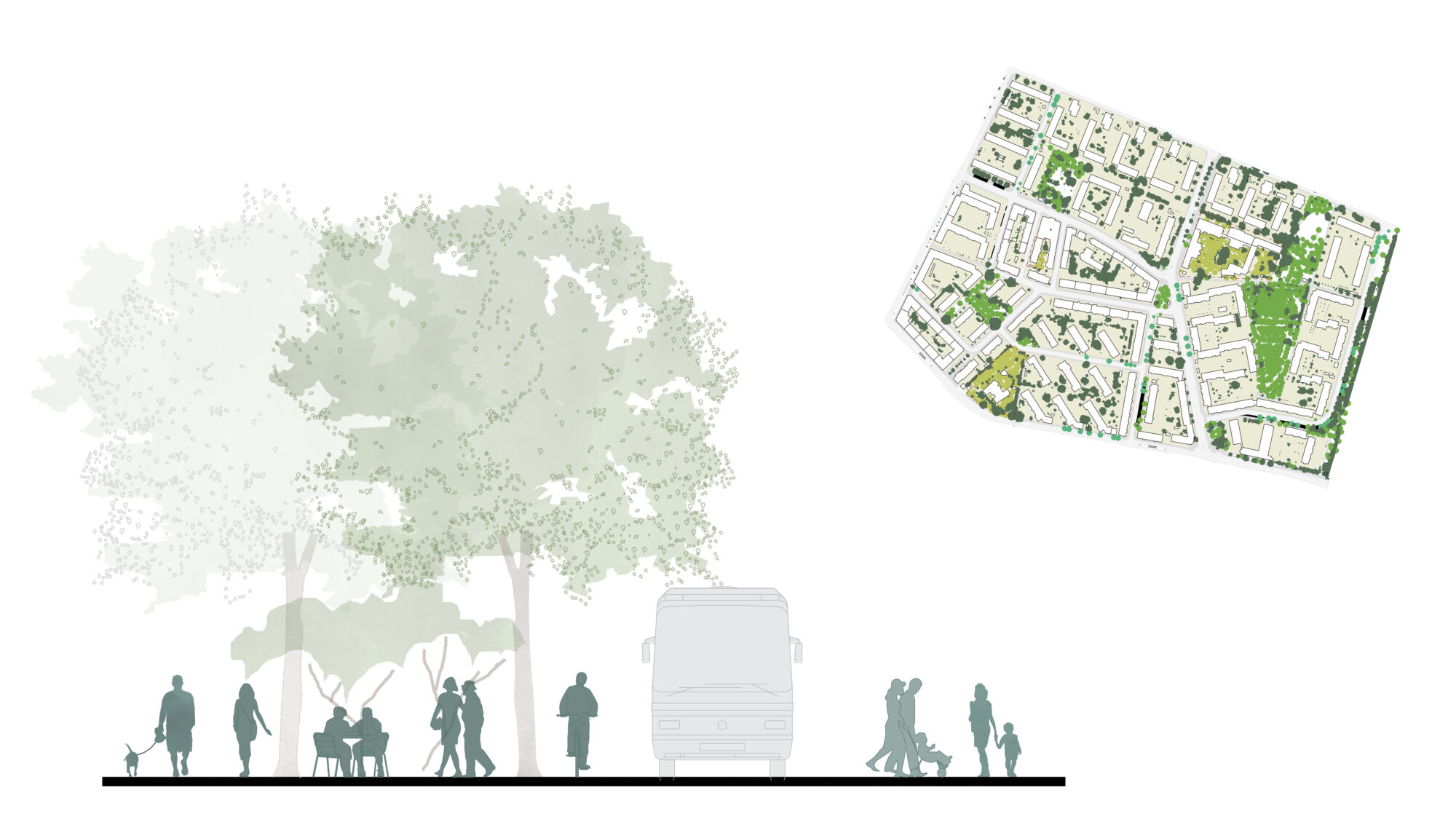2024-06-10
FOJAB launches new tool for greening cities
How much can the amount of greenery in our cities increase? FOJAB's new Treeable tool is based on the 3-30-300 rule and identifies where new trees can be planted to achieve a higher canopy cover in the existing urban environment.
Trees and greenery make people feel good. Proximity to green spaces is strongly linked to reduced risk of, for example, cardiovascular disease, premature death and stress-related diseases. Greenery is also important for biodiversity, trees lower temperatures in cities, slow down rainfall and improve air quality.
Many cities are now looking at the amount of greenery and opportunities to increase the number of trees not only when planning new areas but also in existing city blocks. FOJAB has developed a methodology and a digital tool to identify land suitable for tree planting and to understand the factors that hinder and promote greening. The tool takes into account underground utility structures, current land use and protective distances to buildings, streets and utilities.
The Treeable tool is based on the 3-30-300 rule, a measure of greenness used in planning healthy cities. It means that everyone should be able to see at least 3 trees from every home, school and workplace, every neighborhood should have at least 30% canopy cover and there should be a maximum of 300 meters to a green space from every home.
Treeable has been tested in a study of three neighborhoods in Malmö. The study shows that there are plenty of areas in central cities such as street parking lots, lawns and rest areas that can be planted with trees with simple means. FOJAB presents proposals for measures that increase the degree of greenery and where the trees should be placed to achieve the greatest benefits. Solutions such as completely rebuilding streets and removing all ground parking were also analyzed, to see what this could mean for tree cover potential.
- There are a lot of interests in the dense city and trees often get squeezed. The study conducted in Malmö both showed the possibilities to change the way we work and identified the areas that are actually available for tree planting," says Patrick Bellan, tree specialist at the Property and Street Office in Malmö.
FOJAB also compared Malmö's tree planting regulations with Amsterdam, Berlin and New York, three dense cities that are significantly greener than Malmö. All three have smaller setbacks from utilities, buildings and streets than Malmö, showing that there are good opportunities for the city of Malmö - and likely other Swedish cities - to increase greenery.
The Malmö study also shows how important it is to consider greenery early on when planning new neighborhoods.
- "Our analysis shows that it is relatively easy to increase canopy cover in existing central neighborhoods. However, in the planning of new urban areas, we need to ensure that trees are prioritized much higher and earlier in the process - well before cars and parking lots," says Malin Ingemarsdotter, landscape architect at FOJAB.
Want to know more about Treeable? Get in touch:
Magdalena Hedman
e-mail: magdalena.hedman@fojab.se
tel: +46 708 47 05 50
Malin Ingemarsdotter
e-mail: malin.ingemarsdotter@fojab.se
tel: +46 733 23 26 25
